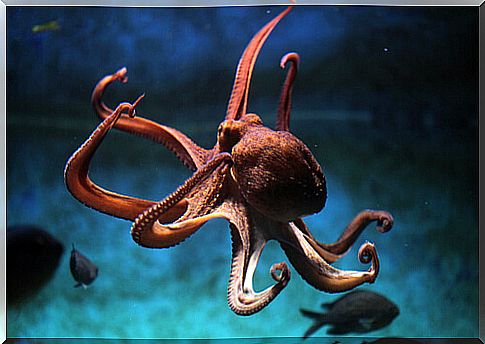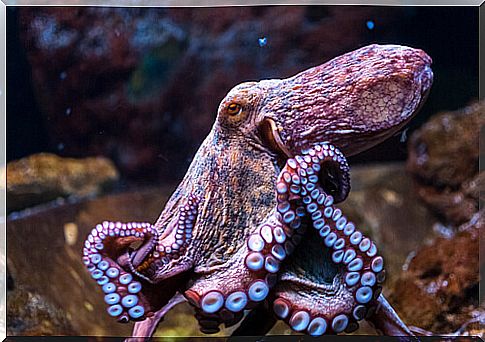What Do You Know About Cephalopods?

Cephalopods are the smartest, most mobile and largest mollusks in the world. This family of marine invertebrates includes octopuses, squid and cuttlefish, of which more than 700 different species of cephalopods have been identified.
This curious group of animals displays remarkable diversity in size and lifestyle with adaptations for predation, locomotion, disguise, and communication. They are ‘intelligent’ beings that have evolved by acquiring tentacles, a beak made of chitin, camera-shaped eyes, color-changing skin, and complex learning behavior.
Their long evolutionary history spans an impressive 500 million years, and the abundant fossils they have left behind – mostly nautiloids and ammonoids – record repeated speciation and extinction events.
Very intelligent animals
Cephalopods are widely considered the most intelligent animals among invertebrates. They have well developed senses and large brains.

Captive cephalopods have also been known to emerge from their aquariums, maneuver a distance they manage to travel, and explore their environment. For example, they can go into another aquarium to feed on the crabs and return to their own aquarium.
Many cephalopods are social creatures. Scientists have reported that when isolated from their peers, some species have interacted with fish.
Cephalopods and their three hearts
All cephalopods have similarities in certain organs. Cephalopods have three hearts, two of which move blood to the gills, while the other pumps blood to the rest of the body.
Also, your blood is blue, because it binds oxygen with the protein hemocyanin. Their brains are much larger than those of other invertebrates, and most species can learn and remember information.
Cephalopod color and anatomy
Cephalopods can change their skin color very quickly and at will. They can even make intricate patterns and shapes on your skin. This is accomplished using chromatophores, which are pigment-filled pockets located on the skin.

These chromatophores can be controlled by the nerves to change the color of the skin. They mainly use this ability to achieve camouflage, but it is also used as part of mating rituals.
Unlike other marine invertebrates, there are both males and females in the cephalopod species. They generally do a courtship ritual when they mate and can change to bright colors. The male transfers a packet of sperm – spermatophore – to the female, who lays eggs that hatch as juveniles.
All cephalopods have the same basic anatomy. They are made up of a body, a head and a foot, and have a muscular covering called a mantle that contains and protects their organs.
They all have arms, at least eight of them, that are attached directly to their heads. The set of arms or tentacles – muscular hydrostatics – evolved from the primitive mollusk foot.
Diet and distribution
Cephalopods are all strict carnivores. Exactly what they eat depends on the species and their size, but common prey includes fish, crustaceans, and mollusks. They have hard beaks, made of chitin, which are useful for tearing and devouring their prey.

These animals can grab and hold their prey with their arms and then break them into small pieces using their beaks. While most species hunt for food, there are certain species that prefer to eat waste.
There are more than 800 species of cephalopods, although new species continue to be described. An estimated 11,000 already extinct taxa have been described, and it should be noted that the soft-bodied nature of cephalopods makes them easily fossilized.
Cephalopods are found in every ocean on Earth. They occupy most of the depth of the ocean, from the abyssal plain to the surface of the sea. Its diversity is greatest near the equator and decreases towards the poles.
Use as an experimental model
The cephalopod brain is protected in a cartilaginous skull. The giant nerve fibers of the mantle have been used extensively for many years as experimental material in neurophysiology. These fibers have a large diameter – due to the lack of myelination – and makes them relatively easy to study compared to other animals.
From myths about their enigmatic fossilized remains to fantastic tales of tentacled sea monsters, cephalopods feature prominently in the literature and folklore of human societies around the world. Today, biologists and paleontologists continue to captivate the human mind and imagination with details of the behavior, natural history, and evolution of these mollusks.








